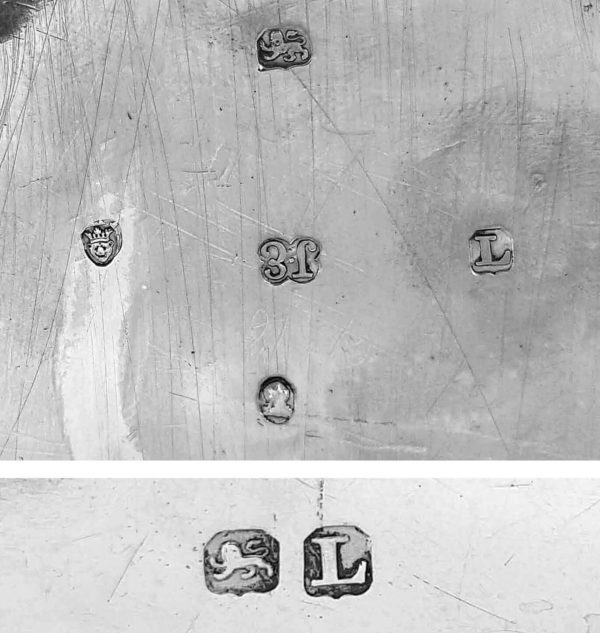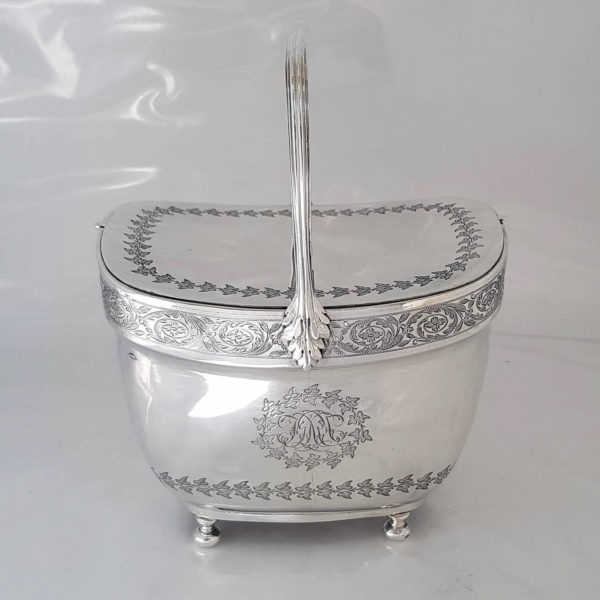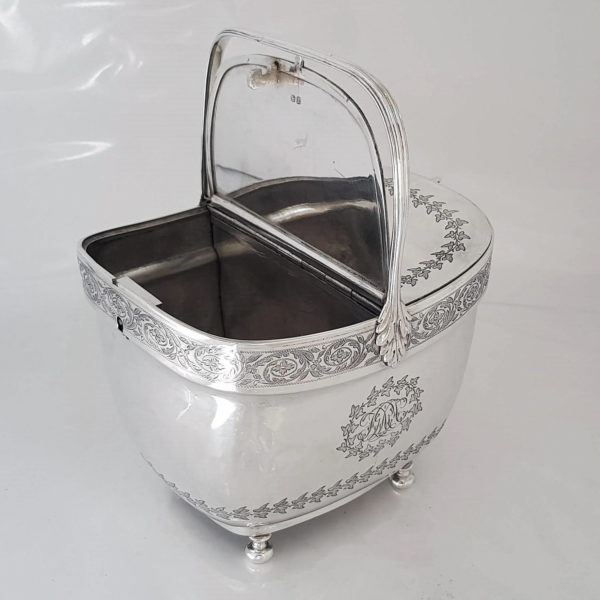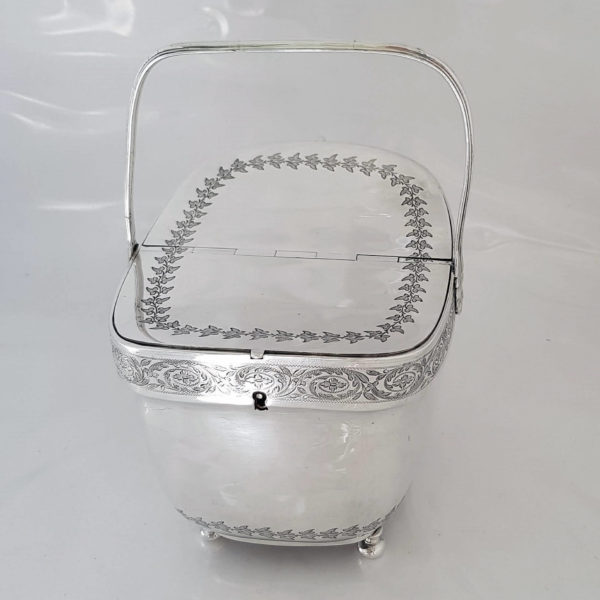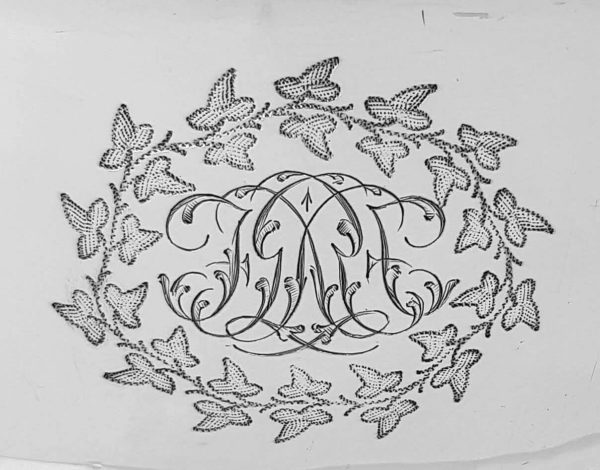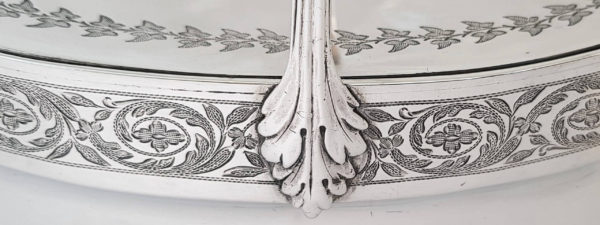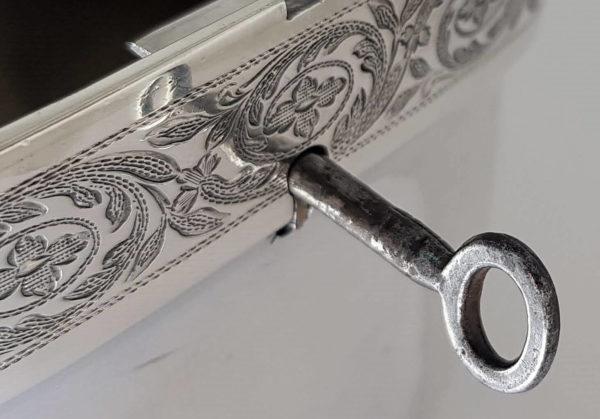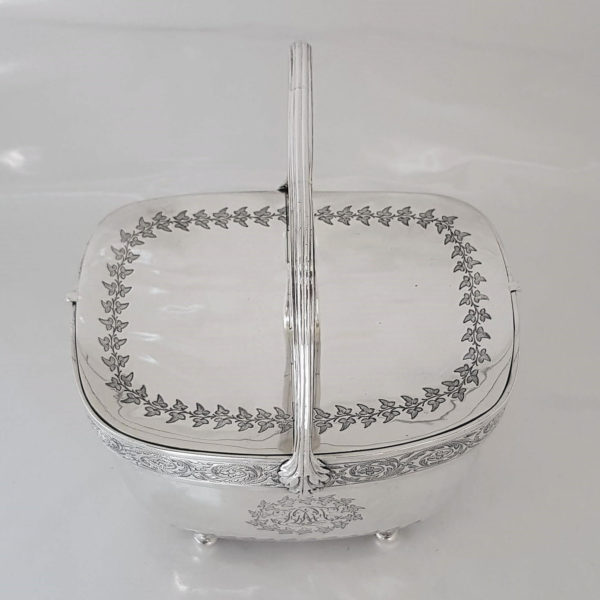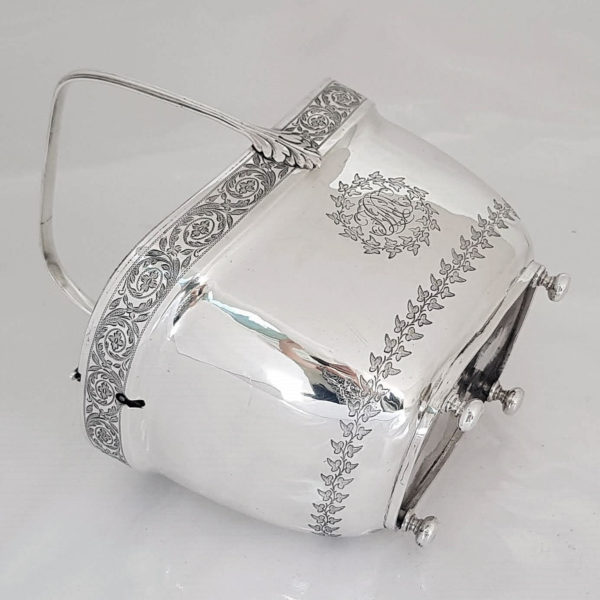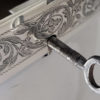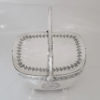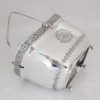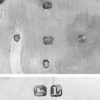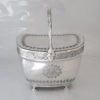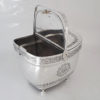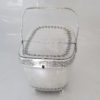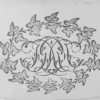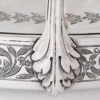George III Silver Tea Caddy
SOLD
Stock: 9872
Date: 1806
Maker: John Emes
Country: England
An unusual antique silver tea caddy box of curved rectangular form. Lovely classic style. This is a double caddy designed...
Description
Condition
In very good condition. Fully functional. The hinges and locks are in working order.
Maker Information
Maker: John Emes
This manufacturing silversmiths, originally established by Anthony Nelme c.1680, passed to Francis Nelme on his death in 1722. Thomas Whipham took over in 1739, passing to his son Thomas Whipham jr 1756 who took Charles Wright as partner. Henry Chawner took over the business in 1786; Chawner had been Edward Barnard I’s master and Barnard’s son Edward became foreman of the firm. John Emes became a partner in 1796 and when Chawner retired Emes took over keeping Edward Barnard II as manager. Emes died in 1808 and his widow Rebecca took Edward Barnard II as partner. Rebecca Emes retired In 1829 and Edward Barnard I became owner, together with his son Edward Barnard II, John Barnard and William Barnard, trading as Edward Barnard & Sons. After the retirement of Edward Barnard I the firm was continued by Edward Barnard II (1846-1851), John Barnard I (1846-1868), William Barnard (1846), Edward Barnard III (1868), Walter Barnard (1868-1903), John Barnard II (1868-1903), Michael Barnard (1896-1903), Stanley Barnard (1896-1903) and Robert Dubcock (1896). The firm became a limited liability company in 1910 as Edward Barnard & Sons Ltd. In 1977 Edward Barnard & Sons Limited became a subsidiary of Padgett & Braham Ltd
Our Guarantee
Customer satisfaction is our primary concern
All silverware on our website is checked thoroughly prior to offering it for sale and every product listing contains a condition report and details of the silver hallmarks.
All items offered on our website include:
- Free Shipping Worldwide
- Tracked and Insured
- 14 day no quibble money back guarantee
- We are accredited members of LAPADA and conform to their strict professional standards
- We dispatch 1-3 days after receiving cleared payments
More detailed information about deliveries, returns and how to pay is available in the Help section at the bottom of this page.
